Fort Siloso — History - Background

Background
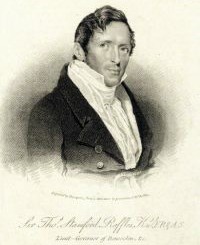
Sir Stamford Raffles
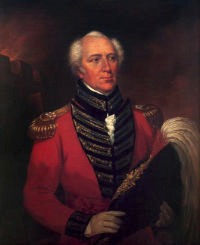
William Farquhar
Sir Stamford Raffles landed on Singapore Island on 29 January 1819. There he found a Malay fishing village with a population of about 150 by the mouth of a river. Half of the population was said to be pirates. By somewhat devious means, a week later, he had made a treaty with the Temenggong. This treaty enabled the East India Company to establish a trading post in Singapore. Raffles then appointed Major William Farquhar as Singapore’s first Resident.
In September 1819, William Farquhar reported that he had discovered a ‘new harbour’ to Sir Stamford Raffles. He may have ‘discovered’ it, but the orang laut (people of the sea) were living there, and had been for a considerable period of time. This harbour was between Blakang Mati and Singapore Island, and had Pulau Brani towards the eastern entrance. ‘New Harbour’ became the name that the harbour was known by.
From such a beginning, Singapore grew very rapidly. In 1826, with Penang and Malacca, it became the Straits Settlements. The 1833 ‘History of British Possessions in the Indian & Atlantic Oceans’, gives Singapore’s population as 10,683 by 1823, with the Chinese being the second largest group behind Malays. By 1 January 1833, the population had risen to 20,978, with the Chinese now being the largest group. In addition to the resident population, there were 553 convicts and 600 military and followers. Imports were £1,780,994 and exports £1,565,157 in 1831.
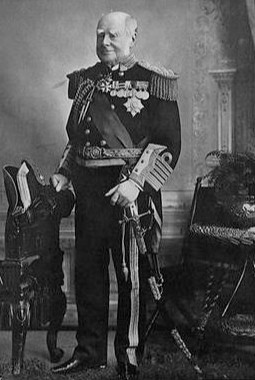
Admiral of the Fleet
Sir Henry Keppel GCB, OM
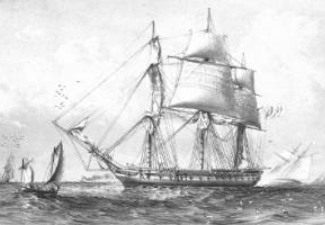
HMS Meander. Launched 1840
From the early days, gun batteries had been constructed to protect Singapore, and the ever burgeoning wealth of the Island. These were all on Singapore Island, and mainly protected the area around the river mouth, and the anchorage beyond.
On board the 5th Rate 44 Gun Frigate HMS Meander in 1848, Captain Henry Keppel discovered that the New Harbour was a good deep water anchorage. In 1900 the name was changed to ‘Keppel Harbour’, when the then Admiral of the Fleet, Sir Henry Keppel came to Singapore again.
Blakang Mati, then called St. George’s Island, was considered to be a very suitable place to construct gun batteries on well before Captain Keppel’s discovery. Indeed as far back as 1827. However, the calls for cannon to be emplaced on the island had been ignored. Nobody wished to pay for them, neither the British Government nor the local government and population.
Maps of 1859 show that New Harbour was being well utilised. A small shipyard was on Pulau Hantu (Pulau Keppel), P&O (Peninsula and Oriental) had wharves and warehouses on Tibing Tingi in Sibet Bay (Vivo City area), Purvis’s wharves ran to the east of Blangah Bay, and the Navy had coal stores on the northern side of Pulau Brani.
From an 1859 report:
15. In drawing up a plan for the defence of Singapore, New Harbour must be protected, and I think it must be assumed not with a view to drive off a predatory attack of a single ship or so, but from one having in view the destination of the Arsenal and the shipping, to Bombard the town...... 20. The strait between Blakan Mati and the Island of Singapore is called New Harbour and is particularly described in Paragraph 11 of this report, it is commanded by the hills on the north side called Mount Faber and by those on Blakan Mati and Island which unless defended might be availed of by an enemy who could land and thence burned the shipping.
44. The Battery on point Rimau seems to be of the utmost importance by ship to enter the Harbour must come stern towards it, the position is next to unaccessible it is a better site in every way than Lots wife is on the mainland and easier garrisoned......
In 1860, a naval revolution occurred. In France, an ironclad warship, La Gloire came into service. This was the world’s first steam powered iron-clad Ship of the Line. All other warships were instantly out of date. La Gloire was armed with rifled guns and her armour was impenetrable to British 68-Pounders, such as those mounted in Singapore to defend the harbour, even at very close range. A naval arms race began, with the British countering with HMS Warrior and HMS Black Prince, both iron hulled and superior to La Gloire and her sister ships.
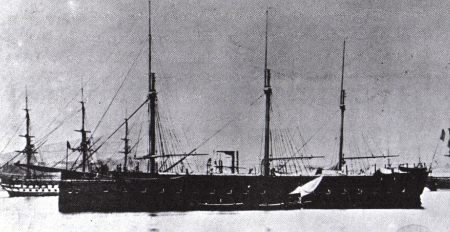
La Gloire. Launched 1859

HMS Warrior. Launched 1860
New warships such as these made the gun batteries in Singapore to all intents and purposes redundant. New armament was urgently needed, but it took time in arriving.
The Governor, W.F Drummond Jervois wrote from Government House to Vice Admiral A. P. Ryder, Commander-in-Chief, China Station, in Shanghai, on 28 July 1876:
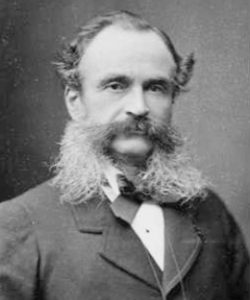
Lt. Gen.
Sir W. F. Drummond Jervois
GCMG CB FRS. 1821-1897
In order to provide effectively for the protection of that Harbour (in which are situated the Coaling Stations, Wharves, Docks, Refitting Establishments and Storehouses), I would propose to place two works on the island of Blakan Mati, and a new Battery on Mount Palmer. These works should be armed with guns sufficiently powerful to penetrate the strongest ironclad which is likely to make an attack on Singapore. The greatest thickness of armour protecting the batteries that an enemy's ironclad cruizers (sic), in these waters, would carry, would in all probability not exceed 6 inches, and I would propose that the armament of the works should have reference to this condition. I would also propose to occupy Mount Faber for defence on the land side. The positions of the several works referred to, are shown on the plan herewith......
One work on Blakan Mati would be on Mount Siloso, at an elevation of 170 feet, and the other on Mount Serapong at an elevation of 303 feet above the sea......
The work on Mount Siloso would defend the Western entrance of the New Harbour; sweep the front of Blakan Mati and the south western coast of the island of Singapore; and also bring a fire to bear upon any vessel that might have succeeded in forcing its way into the New Harbour. I propose that this work should be an open battery, with all necessary accessories, and armed with 6 10 Inch M.L.R. Guns.
Blakang Mati would eventually get the much asked for armament, but it would not be armament really suitable to take on the armoured warships of the day.